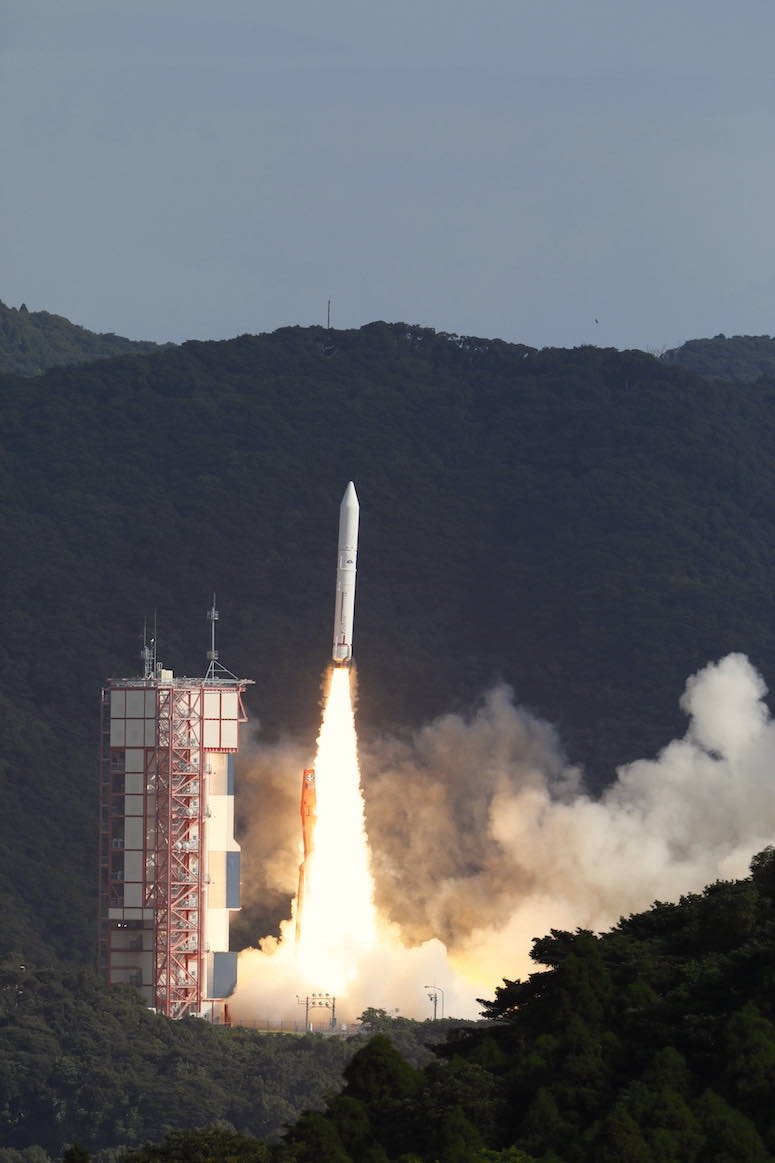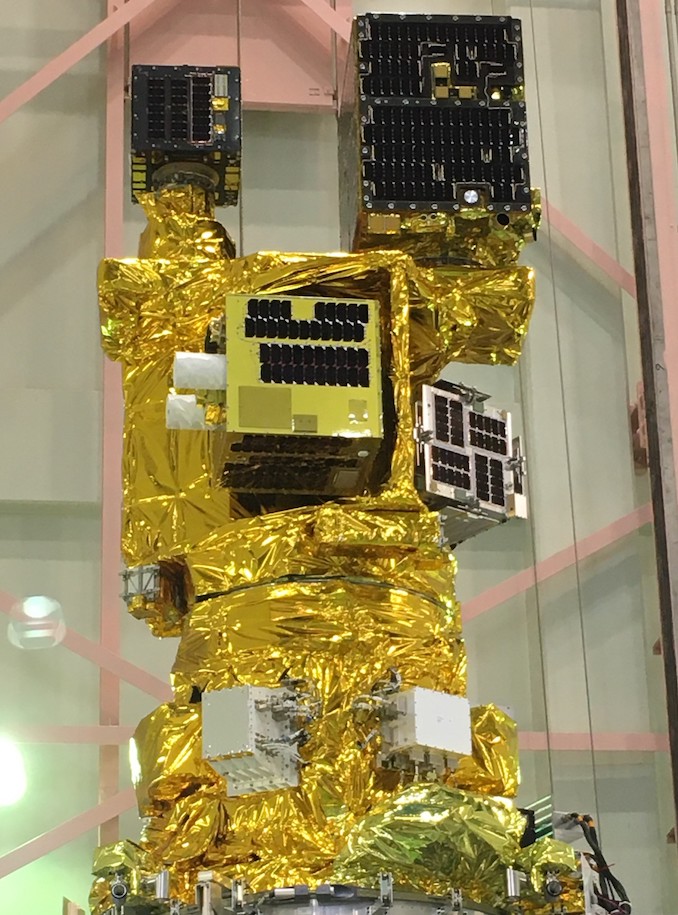
A Japanese Epsilon rocket launched nine small satellites into orbit Nov. 8, deploying technology to prove out ways to eliminate space debris, a miniature lab for biological experiments, and a potpourri of pathfinder probes to test new sensor and spacecraft components.
The solid-fueled launcher blasted off with its nine satellite payloads from the Uchinoura Space Center, located in Japan’s Kagoshima prefecture in the southwestern part of the country, at 7:55:16 p.m. EST on Nov. 8 (0055:16 GMT on Nov. 9).
The liftoff was originally scheduled for Sept. 30, but officials aborted the countdown that day less than a minute before launch due to a problem with a piece of tracking equipment needed to monitor the Electron’s flight into space.
Unfavorable weather kept the rocket grounded the following week, then Japanese officials decided to postpone the mission until November, after the launch of a larger H-2A rocket from Tanegashima Space Center south of the Uchinoura spaceport. Although the rockets are based at different launch bases, they share some pieces of ground support infrastructure.
The H-2A rocket launched Oct. 25 with Japan’s QZS-1R navigation satellite, allowing preparations for the Epsilon rocket to resume at Uchinoura.
Liftoff occurred at 9:55 a.m. Japan Standard Time on Nov. 9, kicking the fifth flight of an Epsilon rocket, which serves the small satellite launch market in Japan, alongside the heavier H-2A rocket, and its future replacement, the H3 launcher.
The 85-foot-tall (26-meter) Epsilon rocket rocket launched south from the Uchinoura Space Center over the Pacific Ocean, targeting an altitude of more than 354 miles (570 kilometers) to release its nine satellite payloads. The mission deployed the satellites right on target in a sun-synchronous orbit at an inclination of 97.6 degrees, according to U.S. military tracking data.
Develop by the Japanese company IHI Aerospace, the Epsilon rocket has now been successful in each of its five launches since 2013.
The first launch of an Epsilon rocket deployed a small ultraviolet space telescope, and the second Epsilon flight in 2016 placed a space weather research probe into orbit. The third Epsilon launch in 2018 launched Japan’s ASNARO 2 radar remote sensing satellite, and seven small tech demo satellites rode into orbit on the most recent Epsilon in January 2019.
The largest payload on the fifth Epsilon flight was the Japan Aerospace Exploration Agency’s Rapid Innovative Payload Demonstration Satellite 2, or RAISE 2, technology demonstration satellite.
RAISE 2, with a launch weight of about 242 pounds (110 kilograms), hosts six technology experiments. The small satellite will test the performance of a Sony micro-computer circuit board that could be used in future spacecraft. The space-resistant board requires less power than other satellite computer systems, according to JAXA.
Built by Mitsubishi Electric Corp., the spacecraft will also test a closed-loop optical fiber gyro, used on satellites to determine their pointing in space. RAISE 2 also carries a small star tracker system that is sized for CubeSats, a 3D-printed X-band antenna, a new lightweight thermal control system, and a domestically-produced inertial sensor unit that could replace foreign-sourced components future Japanese satellites.

Another small satellite on the Epsilon rocket, named DRUMS, will prove out technologies and instruments that could be used on future missions to remove space junk from orbit. The 136-pound (62-kilogram) DRUMS satellite was developed by Kawasaki Heavy Industries.
The 121-pound (55-kilogram) Hibari spacecraft, developed at the Tokyo Institute of Technology, will test a method of attitude control, or pointing, using the variable shape of its solar array wings. Torque generated by moving the cube-shaped craft’s solar arrays could slew, or point, the satellite, replacing attitude control technologies such as control moment gyros and reaction wheels.
The TeikyoSat 4 microsatellite, with a launch weight of 114 pounds (52 kilograms), comes from students and engineers at Teikyo University. The smallsat is a testbed for a miniature lab module that could accommodate biological experiments and other types of microgravity research, a standalone capability TeikyoSat 4’s developers compare to a mini-International Space Station.
Mitsubishi Heavy Industries’ 101-pound (46-kilogram) Z-Sat microsatellite carries a multi-wavelength infrared camera system that could be used to monitor infrastructure, like cities, factories, power plants, and other industrial sites.
The Epsilon rocket placed four smaller CubeSat payloads into orbit, including ASTERISC, an 8.8-pound (4-kilogram) nanosatellite from Chiba Institute of Technology that will unfurl a membrane-like structure to evaluate dust particles in orbit. Another 8.4-pound (3.8-kilogram) CubeSat, named NanoDragon, was developed by the Vietnam National Space Center to test an on-board computer system and a sensor to detect and track maritime traffic from space.
The 6.6-pound (3-kilogram) KOSEN 1 CubeSat, developed at the National Institute of Technology at Kochi College, will deploy an antenna in orbit to study radio emissions from Jupiter.
And ARICA, the smallest payload on the Epsilon rocket, will attempt to detect transient astronomical events like gamma-ray bursts and transmit the data to the ground via a commercial communications satellite network. ARICA was developed at Aoyama Gakuin University in Tokyo.
Email the author.
Follow Stephen Clark on Twitter: @StephenClark1.
